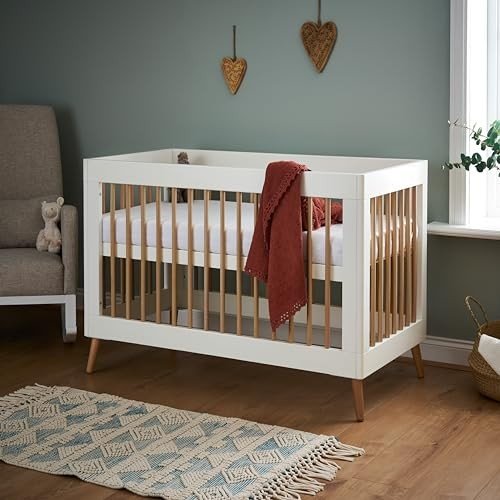See What Cots To Tots Tricks The Celebs Are Utilizing
페이지 정보

본문
Cots to Tots: Navigating the Journey from Crib to Toddler Bed
The early years of a kid's life are marked by a series of amazing milestones and shifts. From very first smiles to initial steps, each stage brings new joys and difficulties for both the child and their parents. One substantial shift that a lot of families deal with is moving their youngster from a cot, likewise referred to as a crib, to a toddler bed. This shift, typically described as the "cots to kids" journey, signifies a considerable step towards self-reliance for the kid and marks a brand-new chapter in their sleep regimen.
This post will look into the intricacies of this shift, exploring why cots are important in the early years, when and how to recognize the ideal time for change, the numerous bed options available for young children, and necessary pointers to ensure a smooth and safe move from cot to bed. Understanding these elements can empower parents to approach this turning point with confidence and create a positive experience for their growing child.
The Comfort and Security of the Cot: Why It Matters in Infancy
For the first months and often years of a child's life, the cot serves as a secure and reassuring haven. Developed with security as a primary consideration, cots offer a consisted of sleeping area that avoids babies from rolling out of bed as they begin to move more actively during sleep. The raised sides and strong construction offer assurance to moms and dads, understanding their baby is sleeping in a safe and protected environment.
Beyond security, the cot likewise becomes a familiar and reassuring space for the baby. It's where they sleep, sleep through the night, and typically play throughout awake times. This familiarity adds to a sense of security, which is important for healthy sleep practices. Secret features of a common cot include:
- High Sides: These prevent babies from climbing up out or falling throughout sleep.
- Durable Construction: Cots are constructed to be robust and stable, making sure safety and longevity.
- Adjustable Mattress Height: Many cots enable moms and dads to reduce the bed mattress height as the baby grows and ends up being more mobile, more boosting security.
- Slatted Sides: These enable for good ventilation and exposure, allowing parents to easily keep an eye on their baby.
The cot, for that reason, is more than just a piece of furniture; it's a fundamental aspect in creating a safe and protected sleep environment for infants, supporting their healthy advancement from their earliest days.
Acknowledging the Right Time to Transition: Signs Your Tot is Ready
Knowing when to shift from a cot to a bed is a common issue for moms and dads. There's no magic age, as every kid develops at their own rate. Nevertheless, there are a number of key indications that suggest your toddler might be all set for this move:
- Climbing Out of the Cot: This is frequently the most compelling and significant sign. When a kid begins to climb up out of their cot, it ends up being a major security risk. It is normally suggested to transition to a bed as quickly as this behavior starts to emerge, regardless of age.
- Reaching the Height Limit: Most cots have a height limitation or a point where they should no longer be used once the child reaches a particular height. Examine the manufacturer's guidelines for your specific cot to guarantee it's still safe for your growing kid.
- Potty Training: For some families, beginning toilet training can be a trigger for transferring to a bed. Having simpler access to the bathroom during the night can be advantageous during this stage.
- Explaining in words a Desire for a "Big Bed": Toddlers frequently mimic their older siblings or parents and may express a wish to have a "big bed" of their own. While this desire alone isn't sufficient factor to transition, it can be a favorable indication that they are psychologically all set and ecstatic about the change.
- Comfort and Space: As children grow taller and more mobile, they might simply grow out of the physical area of the cot. If your kid looks cramped or limited in their cot, it may be time for a more spacious sleeping arrangement.
It's crucial to observe your kid's habits and think about these signs holistically. Rushing the transition before they are really prepared can result in nighttime disturbances and stress and anxieties. Similarly, delaying it too long, specifically if climbing out ends up being a problem, positions safety dangers.
Checking Out Toddler Bed Options: Finding the Perfect Fit
As soon as you've chosen it's time to shift from cot to bed, you'll discover a variety of alternatives designed to cater to the needs of young children. Each type offers different functions and benefits:
- Toddler Beds: These are particularly designed for toddlers transitioning from a cot. They are lower to the ground, often sized to fit a cot mattress, and regularly include side rails to prevent rolling out. Young child beds are a good intermediary action and can make the transition feel less daunting for young kids. They often are available in enjoyable designs and themes that attract toddlers.
- Single Beds: A basic single bed is a flexible alternative that your kid can use for many years to come. While they are higher than young child beds, utilizing bed rails initially can supply additional safety. Choosing a single bed from the start can be more economical in the long run as it removes the requirement for a young child bed that will eventually be grown out of.
- Floor Beds: Also called Montessori beds, floor beds place the bed mattress straight on the flooring or really close to the ground. This minimalist approach promotes independence and liberty of motion. Floor beds are inherently safe in regards to falling danger and can be especially suitable for younger young children or those who are really active in their sleep.
- Convertible Cots: Some cots are designed to convert into toddler beds. This can be a convenient and cost-effective alternative as it makes use of furnishings you currently own and can offer a sense of familiarity during the shift. However, these converted beds often stay quite low to the ground, similar to a toddler bed.
- Bunk Beds (For Older Toddlers/Families with Multiple Children): While typically not advised for really young toddlers due to security concerns about climbing to the top bunk, bunk beds or low loft beds with safety rails can be considered for older young children or families with numerous children sharing a space. Safety ought to always be the paramount concern when thinking about bunk beds.
When choosing a bed, consider your kid's age, size, developmental phase, and character, as well as the readily available area in their space and your spending plan.
Security First: Creating a Secure Toddler Bedroom
Security is paramount when transitioning to a toddler bed. Toddlers exploring their newly found liberty in a bed can be more mobile during the night than they were in a cot. Here are essential safety measures to execute:
- Bed Rails: Especially for young child beds and single beds, bed rails are important to prevent your child from rolling out of bed during the night. Guarantee they are firmly attached and meet security standards.
- Space Safety Check: Conduct an extensive safety check of your kid's bed room.
- Secure Furniture: Anchor high furniture like bookshelves and dressers to the wall to avoid tipping.
- Window Safety: Ensure windows are fitted with safety locks or window guards to prevent falls.
- Electrical Outlets: Cover unused electric outlets with security caps.
- Cords and Wires: Keep cables and wires from lights, blinds, and electronics out of reach.
- Remove Hazards: Eliminate any prospective risks like sharp items, small toys that could be choking dangers, or breakable items from the instant bed area.
- Soft Landing: Consider positioning a rug or soft mat beside the bed, particularly throughout the initial transition duration, to cushion any potential falls.
- Night Light: A night light can offer comfort and visibility, helping your kid feel more safe and navigate their room securely if they wake up during the night.
By proactively resolving security concerns, parents can produce a bedroom environment that is both stimulating and secure for their recently mobile young child.
Smooth Transition Strategies: Making the Move from Cot to Bed Positive
Transitioning from a cot to a bed can be a substantial change for a young child. A thoughtful and steady method can help make the procedure smoother and more positive for everybody:
- Involve Your Child: Make the shift an interesting event. Speak to your kid about getting a "big bed." Take them shopping to pick brand-new bed linen, pillows, and even a special blanket for their brand-new bed. Including them in the process helps them feel ownership and interest.
- Preserve Routine: Keep bedtime routines constant. The familiar rituals of bath time, story time, and cuddles supply comfort and security throughout this modification. Preserving consistency around bedtime assists indicate to your kid that sleep time is approaching, even in a brand-new bed.
- New Bed, Familiar Comforts: Transfer familiar components from the cot to the new bed. Use the very same cot mattress if it fits the young child bed, or use familiar bed linen, blankets, and convenience objects like favorite stuffed animals. This provides a sense of connection and security.
- Favorable Reinforcement: Offer praise and positive support for remaining in bed and calming down. Reward charts or sticker label charts can be motivating for some toddlers. Focus on praising favorable habits rather than penalizing obstacles.
- Patience and Consistency: There may be some preliminary resistance or nighttime wanderings as your child adjusts to the freedom of a bed. Be patient, constant, and carefully guide them back to bed if they go out. Prevent making bedtime a battle.
- Daytime Exploration: Allow your child to explore their brand-new bed during the day. Let them use it, check out books, and become familiar with it as a comfy and safe space before expecting them to sleep in it during the night.
- Steady Transition: For some children, a gradual transition might be helpful. Start by having them nap in the toddler bed first before moving to nighttime sleep.
The "cots to tots" journey is a substantial developmental step. By comprehending the factors behind the shift, selecting the ideal bed, prioritizing safety, and implementing thoughtful techniques, parents can ensure a positive and effective relocate to a young child bed, setting the phase for continued healthy sleep practices as their child grows.
Often Asked Questions (FAQs) about Cots to Tots Transition
Q1: What is the very best crib age to transition from a cot to a toddler bed?
A: There's no set age, as every kid develops differently. Typically, the majority of kids transition in between 18 months and 3 years old. The secret is to look for readiness indications like climbing up out of the cot, reaching the cot's height limitation, or showing other indications of readiness mentioned in the short article.
Q2: My young child keeps rising after the shift. What should I do?
A: This prevails. Gently and calmly assist your kid back to bed each time. Correspond but prevent making it a punishment. Guarantee bedtime routines are soothing and consistent. You might also require to re-evaluate space safety and guarantee there are no interesting interruptions in the room that are enticing them to rise.
Q3: Do I need to buy a brand-new mattress for a toddler bed?
A: Not necessarily. Many young child beds are created to fit a basic cot bed sales mattress. Utilizing the familiar cot bed mattress can even help with the shift. If you are buying a brand-new bed type like a single bed, you will require a mattress that fits that bed frame.
Q4: Are bed rails necessary for young child beds?
A: Bed rails are highly advised, particularly at first. They provide an important security barrier to avoid toddlers from presenting of bed throughout sleep, especially as they adapt to the brand-new sleeping arrangement.
Q5: How long will my child utilize a young child bed?
A: Toddler beds are typically utilized until a child is around 4-5 years old. After this, the majority of kids transition to a single bed or continue in a single bed if that was the initial option. Young child beds are created as a fairly short-term transitional furniture piece.
Q6: Should I shift to a bed if a brand-new baby is showing up and needs the cot?
A: While the arrival of a brand-new Baby Cot can be a useful factor to think about the transition, it's important to prioritize your older kid's preparedness. If they are revealing indications of preparedness near to the baby's arrival, it may be a great time. However, avoid making them feel displaced by the brand-new baby. If they are not really prepared, think about getting a 2nd cot for the brand-new baby instead of rushing the transition.

Q7: Can I make the transition over night?
A: It's generally recommended to approach the shift slowly. Introduce the new bed in a positive way and let your kid end up being acquainted with it throughout the day before anticipating them to sleep in everything night. For some kids, a somewhat longer, steady technique will lead to a more successful and less difficult transition for everybody.
- 이전글A Look Into The Future What Is The Robot Vacuum Industry Look Like In 10 Years? 25.03.31
- 다음글Portable Mobility Scooters For Sale Tools To Make Your Daily Lifethe One Portable Mobility Scooters For Sale Trick That Every Person Must Be Able To 25.03.31
댓글목록
등록된 댓글이 없습니다.



 02.6010.5010
02.6010.5010




